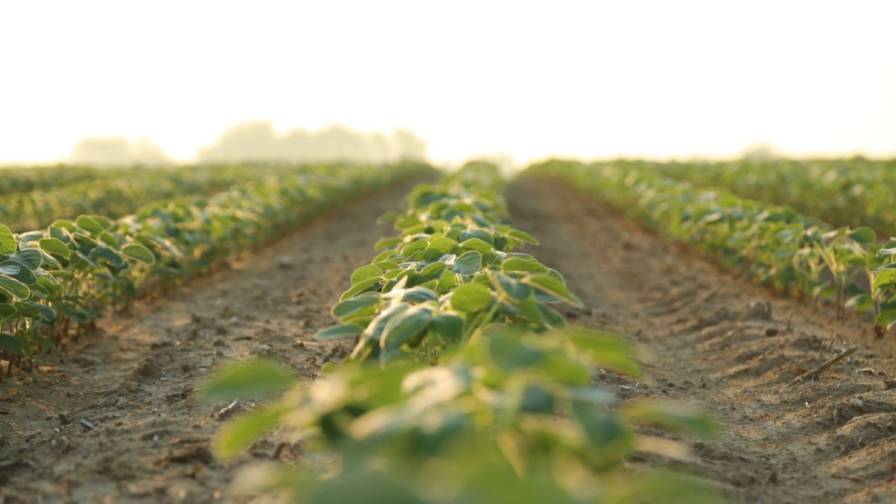CropLife 100: Fertilizer in 2018? Yes
There’s really no way to sugarcoat it — the fertilizer category among CropLife 100 ag retailers has not been a growth engine recently. For almost five years fertilizer sales year over year have steadily declined, as has market share compared to other crop inputs/services. From representing approximately half of all crop inputs/services sales volume during the first few years of the 2010s, the fertilizer category has watched as this market share figure dropped back into the low 40% range, sitting at 41% at the end of 2017.
Going into 2018 virtually everyone who watches the CropLife 100 ag retail marketplace was asking the same question — could the fertilizer category finally reverse its fortunes? Luckily, the answer seems to be a modest “yes.”
According to the 2018 CropLife 100 survey, the fertilizer category finally saw a sales increase during the year, albeit a small one of 0.8%, from $12.1 billion to $12.2 billion. Market share, however, did drop off one more percentage point, now sitting at 40% overall. Although the gain was small, it was still a positive development for the revenues of a category that had spent almost five years with no growth.
Better yet, both the macro- and micronutrients segments kept improving upon their sales for CropLife 100 ag retailers. According to the 2018 CropLife 100 survey data, 61% of the nation’s top ag retailers saw their sales volume within the fertilizer segment improve by 1% to more than 5%. This represented a significant improvement over the 35% of CropLife 100 retailers that recorded this kind of sales gain in the fertilizer segment during the 2017 growing season. Even more promising, only 35% of respondents saw their fertilizer segment revenues fall 1% to more than 5% during the year. The remaining 4% had flat sales.
Even more evidence of a stronger sales year for fertilizer came from the micronutrients segment. For the past several years now, as macronutrient sales have struggled, micronutrients have also underperformed. In fact, in the 2017 CropLife 100 survey report, only 45% of the nation’s top ag retailers saw their micronutrient segment sales grow between 1% and more than 5%.
But in 2018 the percentage improved greatly. According to the 2018 CropLife 100 survey, 55% of ag retailers had sales upticks for micronutrients ranging between 1% and more than 5%. Another 20% saw sales volumes flat from the year before. Only 25% of respondents reported micronutrient sales declines of 1% to more than 5%.
Ask Again Later
Despite the overall positive sales numbers, a few negative issues still faced CropLife 100 retailers in 2018. For one, convincing customers of the need for using macronutrients in their crop fields got somewhat harder than it has been.
For many years the annual CropLife 100 survey has asked respondents to describe how easy or difficult it was during the previous growing season to get their grower-customers to apply the various forms of macronutrients. Overall, as commodity prices fell from historic highs during the early parts of the 2010s to historic lows today, grower-customers have looked to cut back on their crop input purchases accordingly. In many cases, this meant curtailing or reducing their spending on macronutrients — particularly phosphorus and potassium.
During 2017, however, most of the nation’s ag retailers didn’t find convincing their grower-customers of the need for macronutrients that difficult. According to the survey, only 11% of respondents described getting customers to use nitrogen on their crop fields as “very challenging.” Another 40% said this sales effort was “more challenging than normal” for the year. But the majority, 49%, said getting growers to use nitrogen was “not challenging.”
The percentages in 2017 were even stronger for phosphorus and potassium. Here, the percentage of respondents saying this sales effort was “not challenging” stood at 79% and 71%, respectively.
During 2018, however, grower-customers needed a bit more convincing when it came to using macronutrients. For example, according to the 2018 CropLife 100 survey, 12% of respondents found pitching nitrogen use to their grower-customers as “very challenging.” Another 44% described efforts in this area as “more challenging than normal.” Only 44% said nitrogen sales were “not challenging” in 2018.
After nitrogen, potassium usage was the next-hardest macronutrient for retailers to get grower-customers to use. In this segment, 8% of 2018 CropLife 100 ag retailers described their sales efforts as “very challenging.” Another 32% said getting customers to use potassium was “more challenging than normal” during 2018. Only 60% said efforts in this area were “not challenging.”
Convincing grower-customers of the use of phosphorus was the easiest in 2018. Only 3% of respondents said efforts in this area were “very challenging.” Twenty-nine percent said convincing growers to use phosphorus was “more challenging than normal.” The vast majority, however, (68%), thought this part of their business was “not challenging.”
As part of any CropLife 100 survey, a question is included to gauge what kind of crop mix respondents expect their grower-customers to have in the upcoming growing season. Normally, the fertilizer category would be expected to perform better during a crop year when a more crop nutrient-intensive plant, such as corn, dominates the overall crop acreage numbers. However, corn has been the dominant crop in four of the last five growing seasons (the exception being in 2017, when it was outpaced slightly by soybeans) and fertilizer sales still dropped overall.
But if historic norms come into play, CropLife 100 retailers expect corn to retake the row crop acreage lead from soybeans during the 2019 season (primarily because of the ongoing trade war between the U.S. and China negatively impacting soybean demand). In fact, according to the survey, 58% of the nation’s top ag retailers believe corn acreage will expand during 2019 between 1% and more than 10%.






